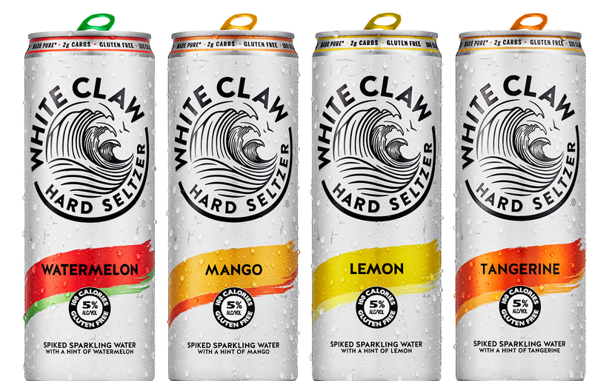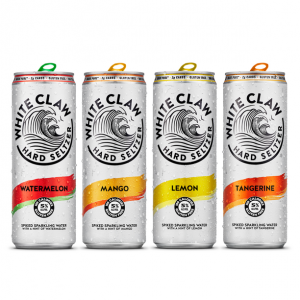
Hard seltzer has been the success story of the last few years in the beverage market but it does seem to be a highly hyped marketplace. In fact it is becoming so confusing that hard seltzer may be losing its fizz, going a bit flat as you might say. Certainly the media is starting to think so.
A hard seltzer is quite alcoholic, not so much as wine but certainly more than lager or beer. It has also been the phenomenon of the USA especially during the COVID-19 pandemic. Spiked sparkling water as it is often labeled with different flavours and of course alcoholic seems the perfect recipe for product development. It appears to have special appeal to both men and women, but there has to be an end to all the razzamatazz. And so launches might be starting to drop off.
Formulating A Hard Seltzer
Generally, a carbonated water which could be from spring and mineral sources, alcohol to a specific level usually 5% ABV, some flavours, cane sugar for sweetness, citric acid and sodium citrate to get the pH and acidity levels right if particular flavours like citrus are being used.
A few such as Truly have also used stevia for sweetness which helps keep the calorie content down.
From a nutrition point of view, about 2 grams of carbohydrates in the form of sugar is usual making it a low Brix product anyway. The calorie content is 100 calories or there abouts.
Labeling Of Hard Seltzers
Usually described as a spiked sparkling water in the USA. It can have a hint of a flavour just to make a sensory difference. I’m not sure ‘gluten-free alcohol’ is needed but it is worth reminding people that it isn’t derived from grain for example but there we are. At least all the products I’ve seen carry the general US government warning about drinking alcohol.
Brands
The big player brands are Truly™, White Claw™ and Bon & Viv. They along with the myriad of other brands have dominated the drinking scene. It’s a product which to my mind seems to find appeal with all sorts of people: the health conscious, college undergraduates who then graduate and take it with them to the office (now home of course), the mothers or moms and so on.
White Claw I suspect are one of the most successful. In 2019, the Washington Post were writing about the way in which this brand kept rising up the charts. The appeal for many was the low-calorie count (as it is for all hard seltzers really), a very good flavour range and social media appeal. White Claw had out on the shelves in 2019 four very good flavours in Raspberry, Natural Lime, Ruby Grapefruit and Black Cherry. If you get the flavours spot-on then taste is everything really and my contacts in the USA just thought they were right-on.
In 2021, White Claw offers a variety pack called Collection No. 2 with four Summer flavours of mango, lemon, tangerine and watermelon in a 12 pack.

The other fantastic phenomenon is the range of endorsement and of course all the major beer producers and grocers trying to get in on the act. Coco-Cola launched their brand, Topo Chico. Kopparberg normally make fruity cider but came up with a strawberry hard seltzer.
Packaging Of Hard Seltzer
In keeping with most canned products the ideal can size (not bottles at the moment) is the 11.8 fluid ounce can – aluminium. It seems to allow for a handy size. If you have a variety of flavours then immediately go for a variety pack like White Claw.
It also meant that beyond the USA, hard seltzers began arriving in Europe and the UK in particular. However advertising this product in Europe generally may bring some of the US producers up a bit short because over here advertising regulations do differ as do the domestic brands.
The Advertising Standards Authority And Claims
In the UK, the Advertising Standards Authority (ASA) has come down hard on a number of brands of hard seltzer. Most of them have made ‘non-permitted’ nutrition claims which is always a big no-no without clinical evidence anyway. The brands in the headlights were Drty Drinks, High Water, BrewDog and Whisp. These were all brands engaged in particular types of marketing activity that are not allowed under the CAP Code.
In some cases one brand claimed ‘a little bit of alcohol’ but was actually 5% ABV which is beer territory frankly. It was not a low-alcohol product by any means. Any alcohol above 1.5% an no claim is possible because it implies alcohol could be healthy whatever the ingredients.
Advertising Madness In The USA
In the USA, advertising is still causing ructions in the marketing press. The race to market is often everything in advertising but it has to be clean.
Anheuser-Busch were told in mid-February by a US District Judge (Michael H. Simon) to halt a deceptive advert for the Michelob Ultra® Organic Seltzer as the ” first national USDA certified organic hard seltzer.” Clearly, a case of deceptive false advertising because unfortunately for A-B a USDA certified form had been released a month earlier by a Pendleton based brewery (Suzie’s Brewery, Oregon) the previous month. This brewery had received federal certification for their product in July 2020 but noticed Michelob doing TV advertising during an NFL championship playoff game on January 24th 2021.
Sales Of Hard Seltzer
Currently, sales have started to wane a bit. Truly are said to have had a bit of a stinker this last month but then one swallow doesn’t make a bad summer although they would be looking for more swallowing that’s for sure. There was just a 4% gain in the 4-week period that ended July 11th (2021) but that doesn’t mean to say all is over. It may be the case that in the US, purchases of other hard products are coming back.
Mind you, that hasn’t stopped a lot of new products entering the marketplace anyway just to contradict myself completely. A few are taking the alcohol content up. Take Surge™ which is 8% by volume of alcohol. This comes in fruit flavours such as cranberry and blood orange and is sold in a 16-ounce can. At the moment it is retailing at $2.99 per can.
Could we be seeing the start of hard kombucha? It’s something we at FoodWrite are working on as we develop our recipes. It is about time that a new flavour with a fermentation credential started edging into the market. Herbal variants are possible too. There is one combo that especially appeals…. .

Leave a Reply